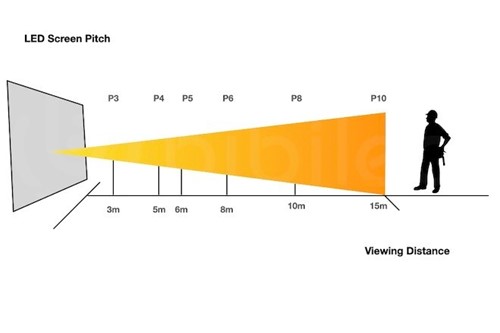Understanding Pixel Pitch: How Resolution Impacts LED Screen Performance

In the realm of LED screens, one term often bandied about is "pixel pitch." While it might sound technical, understanding pixel pitch is crucial for grasping the quality and performance of LED displays. In this blog, we delve into the intricacies of pixel pitch, shedding light on how it influences resolution and ultimately impacts the viewing experience.
What is Pixel Pitch?
Pixel pitch refers to the distance between the centers of adjacent pixels on an LED screen. It is typically measured in millimeters (mm) and serves as a key determinant of display resolution. A smaller pixel pitch indicates a denser arrangement of pixels, resulting in higher resolution and sharper images.
Resolution:
The Crux of Visual Clarity Resolution is the cornerstone of image quality on LED screens. It dictates the level of detail and sharpness visible to the viewer. Higher resolution translates to clearer and more lifelike imagery, crucial for applications ranging from advertising to live events.
Pixel Pitch and Resolution:
The Relationship Unveiled the relationship between pixel pitch and resolution is straightforward: a smaller pixel pitch yields higher resolution. Imagine two LED screens with identical dimensions but different pixel pitches—one with a pitch of 3mm and the other with 5mm. The screen with a 3mm pitch will boast a higher pixel density, resulting in superior resolution and image clarity compared to its 5mm counterpart.
Impact on Viewing Distance
Viewing distance plays a pivotal role in determining the optimal pixel pitch for an LED screen. Screens intended for close viewing, such as indoor displays or digital signage in retail settings, necessitate a smaller pixel pitch to maintain crisp imagery even at close range. Conversely, screens designed for distant viewing, like outdoor billboards or stadium displays, can afford a larger pixel pitch without sacrificing image quality.
Practical Considerations:
Choosing the Right Pixel Pitch selecting the appropriate pixel pitch hinges on various factors, including viewing distance, intended use, and budget constraints. It involves striking a balance between resolution requirements and cost-effectiveness. By aligning pixel pitch with specific application needs, businesses can maximize the impact of their LED displays while optimizing their investment.
Pixel pitch serves as a fundamental determinant of resolution and image quality on LED screens. By comprehending the relationship between pixel pitch and resolution, businesses and consumers alike can make informed decisions when selecting and deploying LED displays. Whether for advertising, entertainment, or informational purposes, choosing the right pixel pitch ensures that your message resonates clearly and effectively with your audience, enhancing the overall viewing experience.